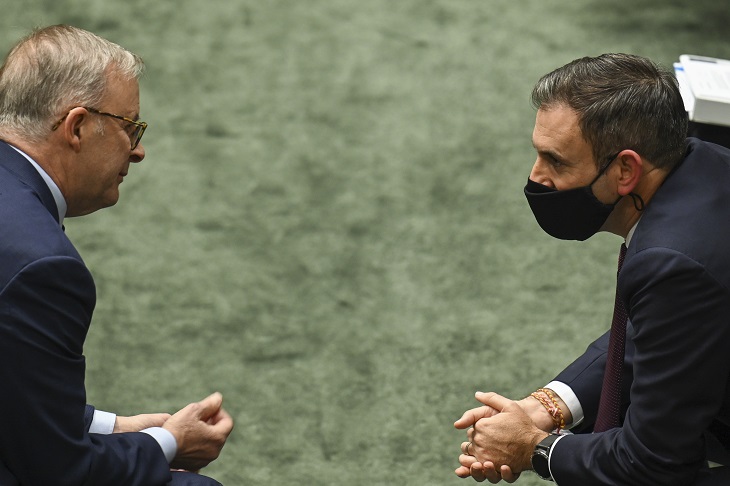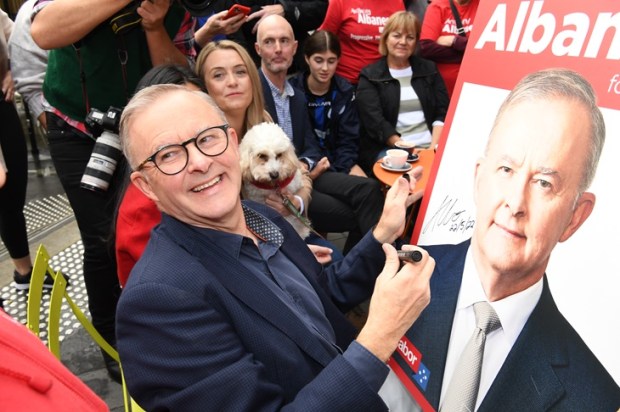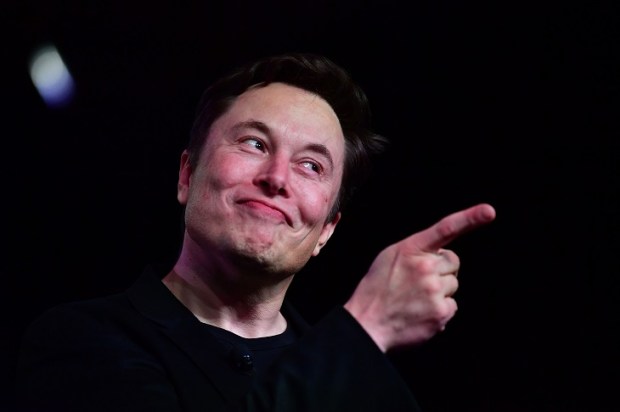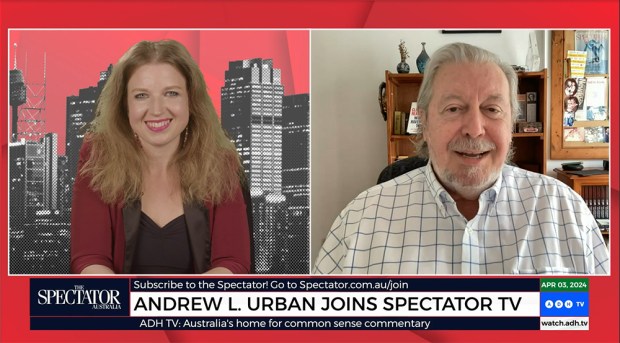The Albanese Labor government has been in power barely three months and already one can discern the vast gulf between its words and actions.
Listen to the Albanese government’s rhetoric on wages, housing affordability, and the environment – then consider its plan to massively expand immigration.
The Albanese government has signalled that it may increase the permanent immigration intake from 160,000 to up to 200,000 per annum – almost the equivalent of a new city the size of Hobart in a single year.
An agreement on these higher immigration numbers will reportedly be one of the primary focuses at Labor’s Jobs and Skills Summit.
If Labor does increase the permanent intake to 200,000 a year, it will represent the biggest immigration surge in Australia’s history, surpassing the record set by Kevin Rudd.
Add to this figure the humanitarian intake of around 14,000, an uncapped number of temporary overseas workers, and an influx of foreign students with untrammelled working rights.
There are already an astonishing 570,000 temporary visa applications that the Albanese government has pledged to fast-track. It is not fanciful to foresee net overseas migration (NOM) surging toward half a million next year. All of this amounts to a revived Big Australia program on steroids.
In the lead-up to the 2022 federal election, Anthony Albanese and Jim Chalmers made a lot of noise about the lack of real wage growth in Australia.
‘The truth is if you want real, permanent, meaningful help with the cost of living, you need a plan to get wages growing again,’ Albanese said, in March this year.
Confronted last week with dismal wage growth figures, Chalmers claimed that ‘a key focus of the jobs and skills summit will be how do we get wages growing at a sustainable rate again, so that Australians aren’t falling further and further behind’.
Yet Albanese and Chalmers would have us believe that the mass importation of overseas workers has absolutely no effect on the earnings of the people already here.
The Prime Minister and the Treasurer clearly didn’t heed the advice of one of Labor’s favourite economists, Ross Garnaut. In his most recent book, Garnaut writes that the ‘overall effect of the mid-2000s ramp-up in immigration was to integrate much of the Australian labour market into a global labour market for the first time’.
According to Garnaut:
‘Integration into a global labour market held down wages… It contributed to persistent unemployment, rising underemployment, and stagnant real wages during the expansion of total economic activity during the Dog Days [the 2010s]. It contributed to a historic shift in the distribution of incomes from wages to profits. Increased immigration contributed to total GDP growth, but detracted from the living standards of many Australian working families.’
It’s not hard to fathom why allowing employers easy access to cheaper foreign labour abrogates any need to offer higher pay or improve conditions and invest in training. A return to Big Australia mass immigration means continued wage stagnation or worse, a decline for Australian workers. It also means soaring housing costs.
It would be nice if a journalist asked the Albanese government the glaringly obvious question: where are all these extra migrants going to live? With rental vacancy rates already at record lows and rents exploding across the country, the Albanese government is about to unleash the mother of all housing crises, inflicting unnecessary pain on legacy Australians and recent arrivals alike. Perhaps the government can ask new migrants to bring their own tents…
‘Australians who work full time should be able to afford a house or cover the rent,’ tweeted Albanese last year. ‘We need to tackle housing affordability.’ Pity the poor fools who were convinced by Albanese’s crocodile tears.
And what about Labor’s much-vaunted emissions reduction targets?
As a 2016 University of Adelaide-led study observed, Australia’s future greenhouse gas emissions are, in part, tied to the country’s immigration policy.
The study concluded:
‘More population growth driven by immigration will hamper Australia’s ability to meet its future Climate Change mitigation commitments and worsen its already stressed ecosystems, unless a massive technological transformation of Australia’s energy sector is immediately forthcoming.’
Such a technological transformation, the study noted, would require the prompt adoption of nuclear energy – an energy source vehemently opposed by the Albanese government. Again, it would be great if a journalist could ask Albo how he intends to reach ‘Net Zero’ under his non-nuclear, Big Australia scenario.
After a pause in immigration due to the Covid pandemic, business groups are very eager to see a return to Big Australia immigration levels. That’s hardly surprising given that high immigration effectively serves as a big, fat, juicy subsidy to lazy businesses in the form of cheaper labour and more customers. But it is ordinary Australians who bear the costs in a variety of ways, including lower wages, more expensive housing, clogged cities, overloaded infrastructure and services, environmental deterioration, diminished social cohesion, and cultural disruption.
A survey conducted last year by the Australian Population Research Institute found a distinct hardening of attitudes toward immigration during the pandemic, with the vast majority of those polled opposing a return to Big Australia immigration levels.
According to the Australian Population Research Institute’s Katharine Betts and Bob Birrell, these findings show that majority opposition to high immigration is consistent with voters’ awareness of its negative consequences.
Another survey, released last week, found that a clear majority want Labor’s Jobs and Skills Summit to focus on lifting wages rather than bringing in more overseas workers. When asked to select the two best options to address worker shortages, 50 per cent said the solution was to increase wages and conditions or offer incentives for new employees, while 50 per cent also stated increased investment in training.
We have been told for decades that Australia is suffering from chronic skills shortages – and that more immigration is the solution. Despite running the largest (in per capita terms) immigration program of any developed country and importing millions of extra workers since the start of the century, Australia is still said to suffer from chronic skills shortages. And now the usual suspects are saying we need even higher immigration to fix the problem.
Something doesn’t stack up here. Cue the famous quote attributed to Einstein about the definition of insanity.
A smart government would shift the focus of our immigration program away from quantity, i.e. importing lots of people, towards quality i.e. a smaller, better targeted, higher skilled intake. A more moderate, manageable intake would generally make life easier for Australia’s existing citizens and residents.
If Albanese does indeed turbocharge immigration at the behest of special interests, it will be a stark reminder that the modern ALP is completely divorced from Australian labour.
Got something to add? Join the discussion and comment below.
Get 10 issues for just $10
Subscribe to The Spectator Australia today for the next 10 magazine issues, plus full online access, for just $10.


























Comments
Don't miss out
Join the conversation with other Spectator Australia readers. Subscribe to leave a comment.
SUBSCRIBEAlready a subscriber? Log in